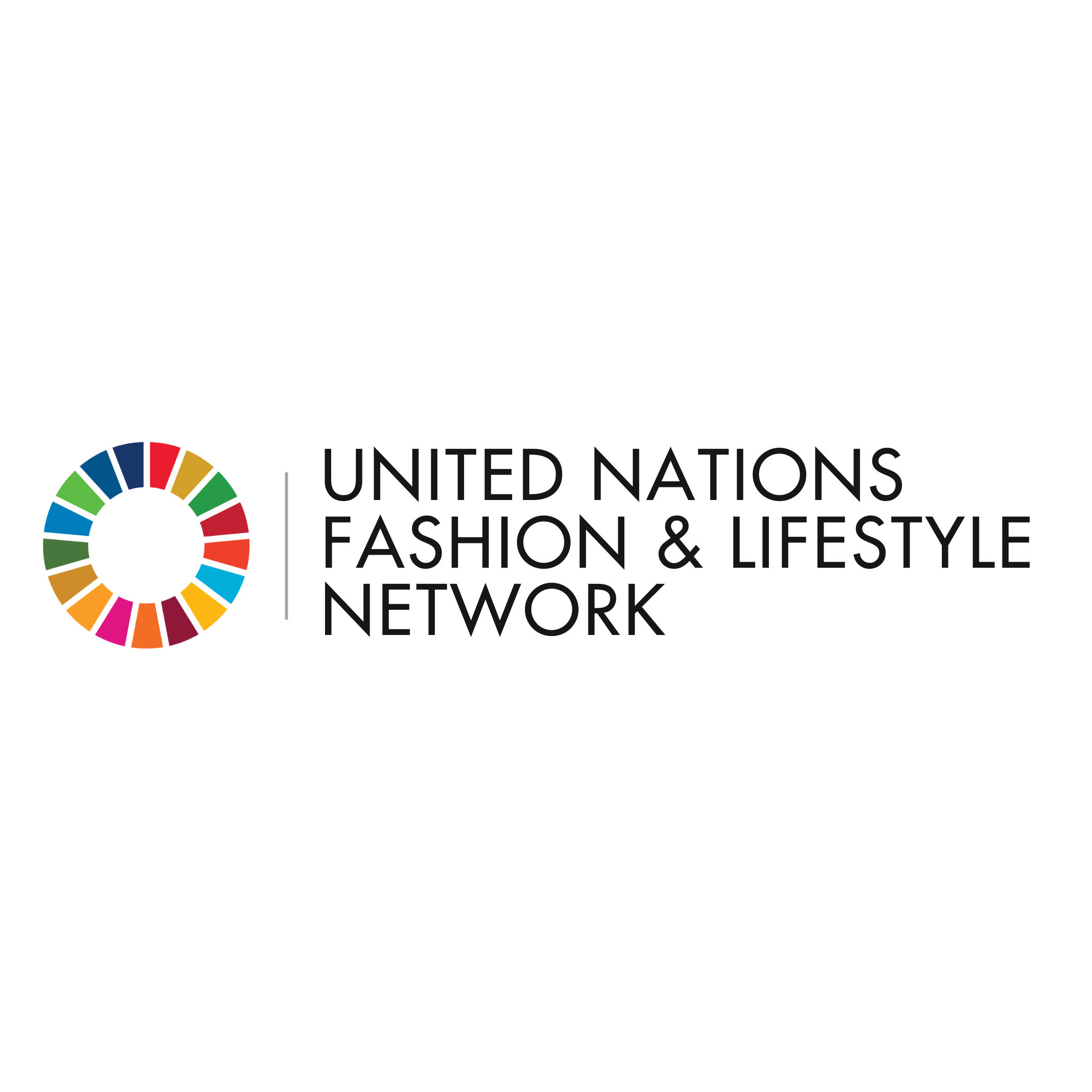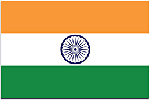Renoon Digital Product Passports
Renoon Tech BV
(
Private sector
)
#SDGAction57483
Description
Renoon is a pioneering SaaS platform that empowers fashion brands, suppliers and retailers to collect, manage, and communicate sustainability data seamlessly. By integrating directly with ERP, PLM, and e-commerce systems, Renoon provides real-time insights into environmental impact, material choices, supply chain transparency and compliance requirements. At the core of Renoon’s mission is the Digital Product Passport (DPP), a powerful tool that ensures compliance with evolving regulations, provides consumers with accurate sustainability information, and fosters circularity in fashion. By enabling brands to disclose validated data like product origins, material impact, and end-of-life options, the DPP enhances responsible decision-making for both businesses and consumers. Renoon collaborates with key industry stakeholders, working groups, and standardization bodies, including CIRPASS 2 and GS1, to ensure alignment with global sustainability frameworks. The platform’s comprehensive approach empowers brands to adopt DPP solutions, improve their ESG performance, and contribute to a more responsible fashion ecosystem.
Renoon has continuously evolved to give companies the tools to track, measure and launch Digital Product Passports and promote sustainability and transparency in the fashion industry. Below is a reverse-chronological overview:
2025:
- Expansion of the Digital Product Passport (DPP) adoption among global fashion brands for pre-compliance.
- Strengthened partnerships with policymakers to shape regulations for digital transparency.
- Integration of AI-driven sustainability insights for enhanced consumer engagement.
2024:
- Introduction of new features in the Renoon platform to support brands in compliance with evolving regulations by seamlessly integrating data from existing systems (PLM, ERP, e-commerce, ...).
- Supplier onboarding platform for direct data sharing and validation with pilots for DPP adoption along the fashion supply chain.
- Analytics integration for ROI measurement.
2023:
- Launch of transparency labels for compliance to regulations.
- Launch of an advanced analytics dashboard for brands to track transparency impact.
- Strengthened collaborations with sustainability certification bodies to ensure credibility of environmental claims.
Renoon actively contributes to sustainability education within the fashion industry by offering:
- Training sessions and workshops on regulatory compliance, the implementation of Digital Product Passports, and other expert-related topics.
- A dedicated knowledge hub featuring best practices, case studies, and insights on how DPPs enhance transparency and circularity.
- Regular industry reports analyzing sustainability progress, consumer expectations, and regulatory developments. Additionally, the platform facilitates collaboration between brands and suppliers by providing digital tools that enable efficient data sharing and traceability across the supply chain, ensuring DPP adoption at scale. The integration process is seamless, leveraging clients' existing ERP, PLM, and e-commerce systems to automatically extract and structure product and supply chain data.
Renoon’s strategy is centered around four key pillars:
1. Digital Product Passport Adoption – Driving industry-wide implementation of DPPs to ensure product-level transparency and compliance.
2. Regulatory Compliance – Supporting adherence to ESRS, CSRD, and Digital Product Passport requirements through automated reporting solutions.
3. Supply Chain Engagement – Enhancing supplier collaboration to improve traceability and material impact assessments.
4. Consumer Awareness – Enabling brands to communicate transparency credentials effectively, fostering responsible purchasing decisions.
Renoon collaborates with industry leaders, governmental organizations, and sustainability-focused initiatives to drive systemic change and establish best practices for responsible fashion.
Industry Reach: 300+ companies involved.
Digital Product Passport Adoption: Over 3M world products with Renoon Passports.
Supply Chain Transparency: 1k+ listed companies from the fashion supply chain. 75% companies for which whole supply chain mapping information has been achieved.
Consumer Engagement: Increase in sustainability-related interactions across brand digital channels through DPP access. 5M+ final users reached, 50M+ impressions of transparency information.
Regulatory Compliance Support: 30+ brands successfully meeting compliance requirements.
Environmental Footprint Reduction: Measurable improvements in carbon emissions reporting.
Renoon collaborates with various industry stakeholders, including CIRPASS 2 and GS1 for the standardization of Digital Product Passport frameworks, the Federation de la Mode Circulaire (FMC) to support circular fashion initiatives through DPP implementation and Movimento Moda Responsabile (MMR) which facilitate the transition to sustainability of the Italian fashion ecosystem. The platform also works closely with sustainability certification bodies worldwide, ensuring validated transparency information are integrated within DPP frameworks. Renoon partners with fashion brands, suppliers and retailers to enhance digital transparency and traceability through DPP adoption. Additionally, it collaborates with legal experts across Europe, and industry consultants to support regulatory compliance and the widespread adoption of DPPs in the fashion sector. By leveraging technology and data-driven solutions, Renoon continues to accelerate the transition toward a more sustainable, transparent, and circular fashion industry.
Renoon collaborates with a diverse range of fashion brands and manufacturers across different countries, supporting them in the adoption of Digital Product Passports (DPPs) to enhance transparency, traceability, and circularity. Among its partners are Dondup (Italy), known for its premium denim; Artknit Studios (Italy), specializing in high-quality knitwear; Triarchy (Canada), a leader in sustainable denim; and Copenhagen Cartel (Denmark), which focuses on swimwear made from regenerated materials. Renoon also works with Womsh (Italy), a pioneer in responsible footwear, Fàbera Jewelry (Italy), bringing transparency to fine custom jewelry, and Unspun (USA), a company revolutionizing custom-fit denim industry. Additionally, Monobi (Italy) integrates DPPs for traced apparel, while manufacturers Bossa (Turkey) and Ereks (Turkey) leverage the technology to bring traceability and transparency to the textile supply chain.
SDGS & Targets
Goal 8
Promote sustained, inclusive and sustainable economic growth, full and productive employment and decent work for all
8.1
8.1.1
Annual growth rate of real GDP per capita
8.2
Achieve higher levels of economic productivity through diversification, technological upgrading and innovation, including through a focus on high-value added and labour-intensive sectors
8.2.1
Annual growth rate of real GDP per employed person
8.3
Promote development-oriented policies that support productive activities, decent job creation, entrepreneurship, creativity and innovation, and encourage the formalization and growth of micro-, small- and medium-sized enterprises, including through access to financial services
8.3.1
Proportion of informal employment in total employment, by sector and sex
8.4
Improve progressively, through 2030, global resource efficiency in consumption and production and endeavour to decouple economic growth from environmental degradation, in accordance with the 10-Year Framework of Programmes on Sustainable Consumption and Production, with developed countries taking the lead
8.4.1
Material footprint, material footprint per capita, and material footprint per GDP
8.4.2
Domestic material consumption, domestic material consumption per capita, and domestic material consumption per GDP
8.5
8.5.1
Average hourly earnings of female and male employees, by occupation, age and persons with disabilities
8.5.2
Unemployment rate, by sex, age and persons with disabilities
8.6
8.6.1
Proportion of youth (aged 15-24 years) not in education, employment or training
8.7
Take immediate and effective measures to eradicate forced labour, end modern slavery and human trafficking and secure the prohibition and elimination of the worst forms of child labour, including recruitment and use of child soldiers, and by 2025 end child labour in all its forms
8.7.1
Proportion and number of children aged 5‑17 years engaged in child labour, by sex and age
8.8
Protect labour rights and promote safe and secure working environments for all workers, including migrant workers, in particular women migrants, and those in precarious employment
8.8.1
Fatal and non-fatal occupational injuries per 100,000 workers, by sex and migrant status
8.8.2
Level of national compliance with labour rights (freedom of association and collective bargaining) based on International Labour Organization (ILO) textual sources and national legislation, by sex and migrant status
8.9
By 2030, devise and implement policies to promote sustainable tourism that creates jobs and promotes local culture and products
8.9.1
Tourism direct GDP as a proportion of total GDP and in growth rate
8.10
Strengthen the capacity of domestic financial institutions to encourage and expand access to banking, insurance and financial services for all
8.10.1
(a) Number of commercial bank branches per 100,000 adults and (b) number of automated teller machines (ATMs) per 100,000 adults
8.10.2
Proportion of adults (15 years and older) with an account at a bank or other financial institution or with a mobile-money-service provider
8.a
8.a.1
Aid for Trade commitments and disbursements
8.b
By 2020, develop and operationalize a global strategy for youth employment and implement the Global Jobs Pact of the International Labour Organization
8.b.1
Existence of a developed and operationalized national strategy for youth employment, as a distinct strategy or as part of a national employment strategy
Goal 9
Build resilient infrastructure, promote inclusive and sustainable industrialization and foster innovation
9.1
9.1.1
Proportion of the rural population who live within 2 km of an all-season road
9.1.2
Passenger and freight volumes, by mode of transport
9.2
Promote inclusive and sustainable industrialization and, by 2030, significantly raise industry’s share of employment and gross domestic product, in line with national circumstances, and double its share in least developed countries
9.2.1
Manufacturing value added as a proportion of GDP and per capita
9.2.2
Manufacturing employment as a proportion of total employment
9.3
9.3.1
Proportion of small-scale industries in total industry value added, based on (a) international classification and (b) national classifications
9.3.2
Proportion of small-scale industries with a loan or line of credit
9.4
By 2030, upgrade infrastructure and retrofit industries to make them sustainable, with increased resource-use efficiency and greater adoption of clean and environmentally sound technologies and industrial processes, with all countries taking action in accordance with their respective capabilities
9.4.1
CO2 emission per unit of value added
9.5
9.5.1
Research and development expenditure as a proportion of GDP
9.5.2
Researchers (in full-time equivalent) per million inhabitants
9.a
9.a.1
Total official international support (official development assistance plus other official flows) to infrastructure
9.b
9.b.1
Proportion of medium and high-tech industry value added in total value added
9.c
Significantly increase access to information and communications technology and strive to provide universal and affordable access to the Internet in least developed countries by 2020
9.c.1
Proportion of population covered by a mobile network, by technology
Goal 12
Ensure sustainable consumption and production patterns
12.1
Implement the 10-Year Framework of Programmes on Sustainable Consumption and Production Patterns, all countries taking action, with developed countries taking the lead, taking into account the development and capabilities of developing countries
12.1.1
Number of countries developing, adopting or implementing policy instruments aimed at supporting the shift to sustainable consumption and production
12.2
By 2030, achieve the sustainable management and efficient use of natural resources
12.2.1
Material footprint, material footprint per capita, and material footprint per GDP
12.2.2
Domestic material consumption, domestic material consumption per capita, and domestic material consumption per GDP
12.3
By 2030, halve per capita global food waste at the retail and consumer levels and reduce food losses along production and supply chains, including post-harvest losses
12.3.1
(a) Food loss index and (b) food waste index
12.4
By 2020, achieve the environmentally sound management of chemicals and all wastes throughout their life cycle, in accordance with agreed international frameworks, and significantly reduce their release to air, water and soil in order to minimize their adverse impacts on human health and the environment
12.4.1
12.4.2
(a) Hazardous waste generated per capita; and (b) proportion of hazardous waste treated, by type of treatment
12.5
By 2030, substantially reduce waste generation through prevention, reduction, recycling and reuse
12.5.1
National recycling rate, tons of material recycled
12.6
Encourage companies, especially large and transnational companies, to adopt sustainable practices and to integrate sustainability information into their reporting cycle
12.6.1
12.7
Promote public procurement practices that are sustainable, in accordance with national policies and priorities
12.7.1
Number of countries implementing sustainable public procurement policies and action plans
12.8
By 2030, ensure that people everywhere have the relevant information and awareness for sustainable development and lifestyles in harmony with nature
12.8.1
Extent to which (i) global citizenship education and (ii) education for sustainable development are mainstreamed in (a) national education policies; (b) curricula; (c) teacher education; and (d) student assessment
12.a
Support developing countries to strengthen their scientific and technological capacity to move towards more sustainable patterns of consumption and production
12.a.1
Installed renewable energy-generating capacity in developing and developed countries (in watts per capita)
12.b
Develop and implement tools to monitor sustainable development impacts for sustainable tourism that creates jobs and promotes local culture and products
12.b.1
Implementation of standard accounting tools to monitor the economic and environmental aspects of tourism sustainability
12.c
Rationalize inefficient fossil-fuel subsidies that encourage wasteful consumption by removing market distortions, in accordance with national circumstances, including by restructuring taxation and phasing out those harmful subsidies, where they exist, to reflect their environmental impacts, taking fully into account the specific needs and conditions of developing countries and minimizing the possible adverse impacts on their development in a manner that protects the poor and the affected communities
12.c.1
Amount of fossil-fuel subsidies (production and consumption) per unit of GDP
Goal 13
Take urgent action to combat climate change and its impacts
13.1
Strengthen resilience and adaptive capacity to climate-related hazards and natural disasters in all countries
13.1.1
Number of deaths, missing persons and directly affected persons attributed to disasters per 100,000 population
13.1.2
Number of countries that adopt and implement national disaster risk reduction strategies in line with the Sendai Framework for Disaster Risk Reduction 2015–2030
13.1.3
Proportion of local governments that adopt and implement local disaster risk reduction strategies in line with national disaster risk reduction strategies
13.2
Integrate climate change measures into national policies, strategies and planning
13.2.1
Number of countries with nationally determined contributions, long-term strategies, national adaptation plans and adaptation communications, as reported to the secretariat of the United Nations Framework Convention on Climate Change
13.2.2
Total greenhouse gas emissions per year
13.3
Improve education, awareness-raising and human and institutional capacity on climate change mitigation, adaptation, impact reduction and early warning
13.3.1
Extent to which (i) global citizenship education and (ii) education for sustainable development are mainstreamed in (a) national education policies; (b) curricula; (c) teacher education; and (d) student assessment
13.a
Implement the commitment undertaken by developed-country parties to the United Nations Framework Convention on Climate Change to a goal of mobilizing jointly $100 billion annually by 2020 from all sources to address the needs of developing countries in the context of meaningful mitigation actions and transparency on implementation and fully operationalize the Green Climate Fund through its capitalization as soon as possible
13.a.1
Amounts provided and mobilized in United States dollars per year in relation to the continued existing collective mobilization goal of the $100 billion commitment through to 2025
13.b
Promote mechanisms for raising capacity for effective climate change-related planning and management in least developed countries and small island developing States, including focusing on women, youth and local and marginalized communities
13.b.1
Number of least developed countries and small island developing States with nationally determined contributions, long-term strategies, national adaptation plans and adaptation communications, as reported to the secretariat of the United Nations Framework Convention on Climate Change
Goal 17
Strengthen the means of implementation and revitalize the Global Partnership for Sustainable Development
17.1
Strengthen domestic resource mobilization, including through international support to developing countries, to improve domestic capacity for tax and other revenue collection
17.1.1
17.1.2
17.2
Developed countries to implement fully their official development assistance commitments, including the commitment by many developed countries to achieve the target of 0.7 per cent of ODA/GNI to developing countries and 0.15 to 0.20 per cent of ODA/GNI to least developed countries; ODA providers are encouraged to consider setting a target to provide at least 0.20 per cent of ODA/GNI to least developed countries
17.2.1
17.3
Mobilize additional financial resources for developing countries from multiple sources
17.3.1
Additional financial resources mobilized for developing countries from multiple sources
17.3.2
17.4
Assist developing countries in attaining long-term debt sustainability through coordinated policies aimed at fostering debt financing, debt relief and debt restructuring, as appropriate, and address the external debt of highly indebted poor countries to reduce debt distress
17.4.1
Debt service as a proportion of exports of goods, services and primary income
17.5
Adopt and implement investment promotion regimes for least developed countries
17.5.1
Number of countries that adopt and implement investment promotion regimes for developing countries, including the least developed countries
17.6
Enhance North-South, South-South and triangular regional and international cooperation on and access to science, technology and innovation and enhance knowledge sharing on mutually agreed terms, including through improved coordination among existing mechanisms, in particular at the United Nations level, and through a global technology facilitation mechanism
17.6.1
Fixed broadband subscriptions per 100 inhabitants, by speed
17.7
Promote the development, transfer, dissemination and diffusion of environmentally sound technologies to developing countries on favourable terms, including on concessional and preferential terms, as mutually agreed
17.7.1
Total amount of funding for developing and developed countries to promote the development, transfer, dissemination and diffusion of environmentally sound technologies
17.8
Fully operationalize the technology bank and science, technology and innovation capacity-building mechanism for least developed countries by 2017 and enhance the use of enabling technology, in particular information and communications technology
17.8.1
17.9
Enhance international support for implementing effective and targeted capacity-building in developing countries to support national plans to implement all the Sustainable Development Goals, including through North-South, South-South and triangular cooperation
17.9.1
Dollar value of official development assistance committed to developing countries
17.10
Promote a universal, rules-based, open, non-discriminatory and equitable multilateral trading system under the World Trade Organization, including through the conclusion of negotiations under its Doha Development Agenda
17.10.1
17.11
Significantly increase the exports of developing countries, in particular with a view to doubling the least developed countries’ share of global exports by 2020
17.11.1
Developing countries’ and least developed countries’ share of global exports
17.12
Realize timely implementation of duty-free and quota-free market access on a lasting basis for all least developed countries, consistent with World Trade Organization decisions, including by ensuring that preferential rules of origin applicable to imports from least developed countries are transparent and simple, and contribute to facilitating market access
17.12.1
Weighted average tariffs faced by developing countries, least developed countries and small island developing States
17.13
Enhance global macroeconomic stability, including through policy coordination and policy coherence
17.13.1
17.14
Enhance policy coherence for sustainable development
17.14.1
17.15
Respect each country’s policy space and leadership to establish and implement policies for poverty eradication and sustainable development
17.15.1
17.16
Enhance the Global Partnership for Sustainable Development, complemented by multi-stakeholder partnerships that mobilize and share knowledge, expertise, technology and financial resources, to support the achievement of the Sustainable Development Goals in all countries, in particular developing countries
17.16.1
Number of countries reporting progress in multi-stakeholder development effectiveness monitoring frameworks that support the achievement of the Sustainable Development Goals
17.17
Encourage and promote effective public, public-private and civil society partnerships, building on the experience and resourcing strategies of partnerships
17.17.1
Amount in United States dollars committed to public-private partnerships for infrastructure
17.18
By 2020, enhance capacity-building support to developing countries, including for least developed countries and small island developing States, to increase significantly the availability of high-quality, timely and reliable data disaggregated by income, gender, age, race, ethnicity, migratory status, disability, geographic location and other characteristics relevant in national contexts
17.18.1
Statistical capacity indicators
17.18.2
17.18.3
Number of countries with a national statistical plan that is fully funded and under implementation, by source of funding
17.19
By 2030, build on existing initiatives to develop measurements of progress on sustainable development that complement gross domestic product, and support statistical capacity-building in developing countries
17.19.1
17.19.2
Proportion of countries that (a) have conducted at least one population and housing census in the last 10 years; and (b) have achieved 100 per cent birth registration and 80 per cent death registration
SDG 14 targets covered
| Name | Description |
|---|
Deliverables & Timeline
A report analyzing the adoption of DPPs and compliance industry barriers among partner brands and experts.
A study measuring how DPPs influence consumer behavior toward responsible purchasing and circular economy models, based on real-world engagement metrics.
Resources mobilized
Partnership Progress

Feedback
Action Network

Timeline
Entity
Region
- Europe
Geographical coverage
Other beneficiaries
The adoption of Renoon’s Digital Product Passport benefits multiple stakeholders across the fashion industry. Brands and retailers gain a structured, compliance-ready tool for sustainability reporting, improving transparency and consumer trust. Consumers benefit from access to validated information, enabling responsible purchasing decisions and fostering a circular economy. Suppliers and manufacturers experience improved traceability and streamlined data-sharing processes, while regulators and certification bodies receive standardized, reliable sustainability disclosures.
More information
Countries










Contact Information
Sara Ongaro, Sustainability Manager

